Australia’s Salt Ponds Look Like Beautiful, Abstract Art From Above
Taking to the sky to show how industry shapes the earth
Glowing like opals under the midday sun, these salt-crystallizing ponds stretch across 27 square miles on the coast of Western Australia near a tiny, remote town with the curious name of Useless Loop. The community is home to a few dozen employees of Shark Bay Salt, a Japanese-owned company that harvests more than 1.5 million tons of sea salt annually for export to Asia.
Sydney-based photographer Peter Franc has long been interested in desolation—deserts, dry lake beds, the dead zone around Chernobyl—and Shark Bay, a Unesco World Heritage Site better known for its sea grass, dugongs and stromatolites (rock-like colonies of ancient algae) was long on his list of “dream destinations.” But the salt ponds are off limits to the public, so to get close enough to shoot them, Franc chartered a low-flying Cessna 206, asking the pilot to take the doors off so he could get a better view.
“It was pretty scary,” he recalls. “Between looking through the lens, the crazy loud noise of the engine, the rushing of the wind, and the sheer excitement of seeing everything from above, I felt sick for most of the hour-long flight.” Still, he adds, “I was utterly amazed at what I saw.”
Dating to the 1960s, these salt ponds were created by closing off natural inlets within the shallow, still bay, which, thanks to a high rate of evaporation, is about 50 percent saltier than the open ocean. Their colors shift gradually from cerulean blue to milky white as the brine crystallizes, and once most of the water has evaporated workers arrive with a mechanical harvester to collect the salt, leaving a striated pattern that, from above, gives the impression of brushstrokes.
“The subtlety of colors and textures is out of this world,” says Franc, whose images, wonderfully reminiscent of Abstract Expressionist paintings, are in keeping with Franc’s long-professed love of large-scale geometry—straight lines, sharp corners, perfect circles. In addition to his “Salt” series, he has created spare pictures of deteriorating power plants, ancient temples and forgotten Soviet monuments, studies of human construction minus a human presence that raise questions about which of our works might outlast us, and what they might look like to future civilizations.
“A big theme in my work is the marks we, as humans, leave on the landscape,” he says. “There’s a tension created by imposing graphic elements on an organic world.”
/https://tf-cmsv2-smithsonianmag-media.s3.amazonaws.com/accounts/headshot/amy.png)
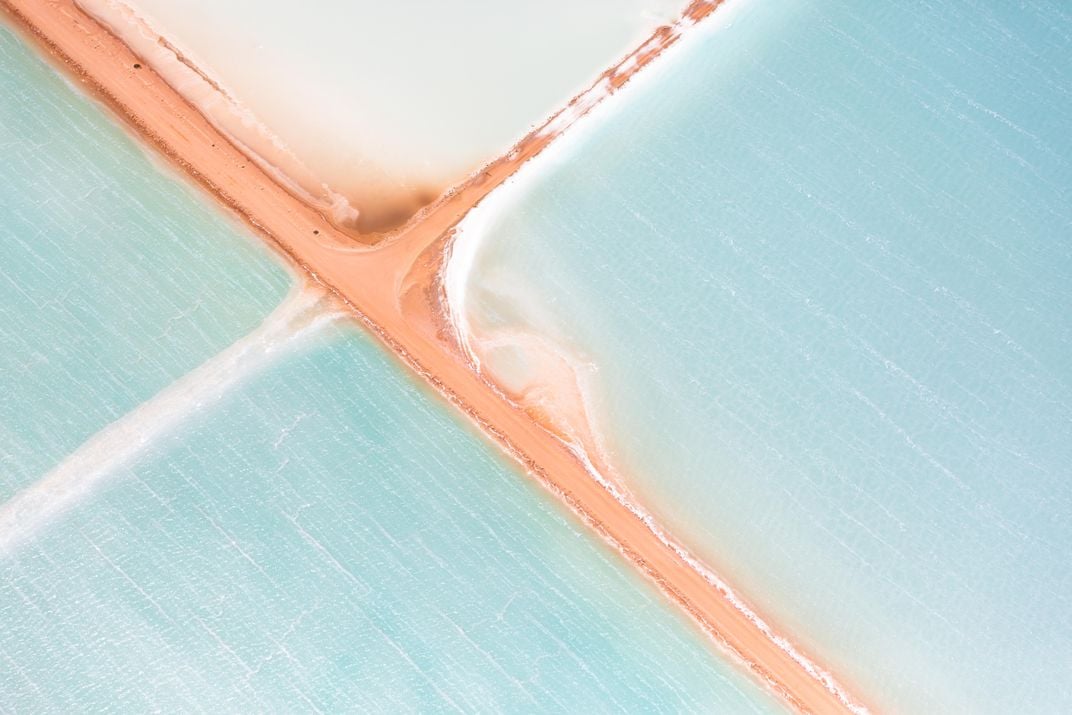
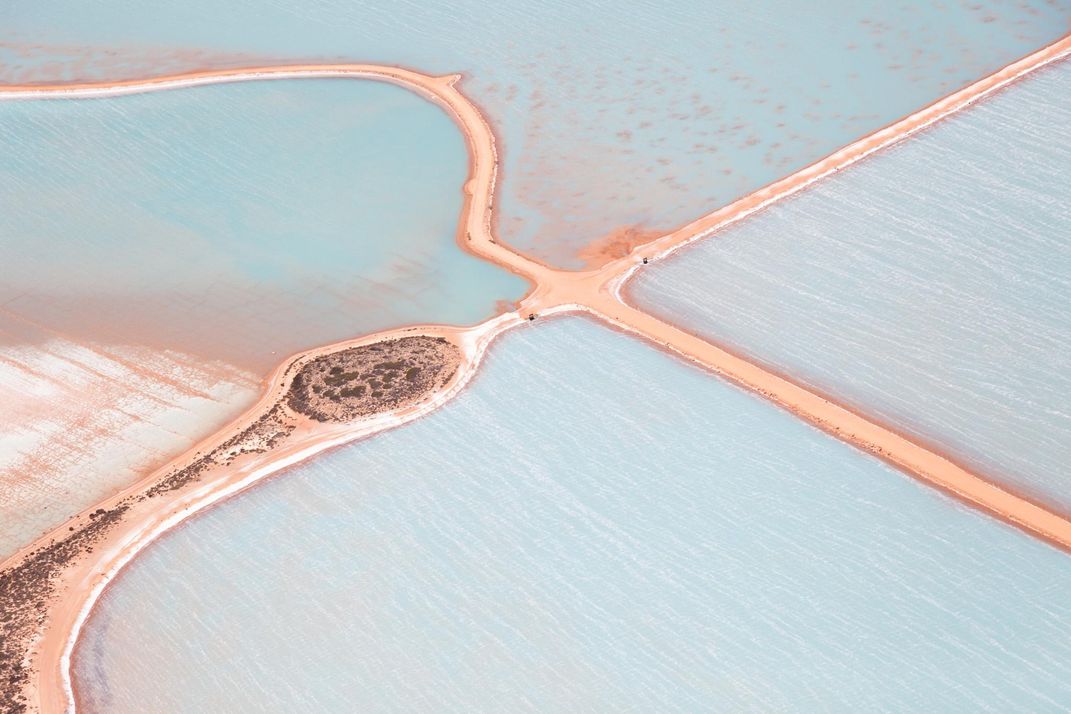
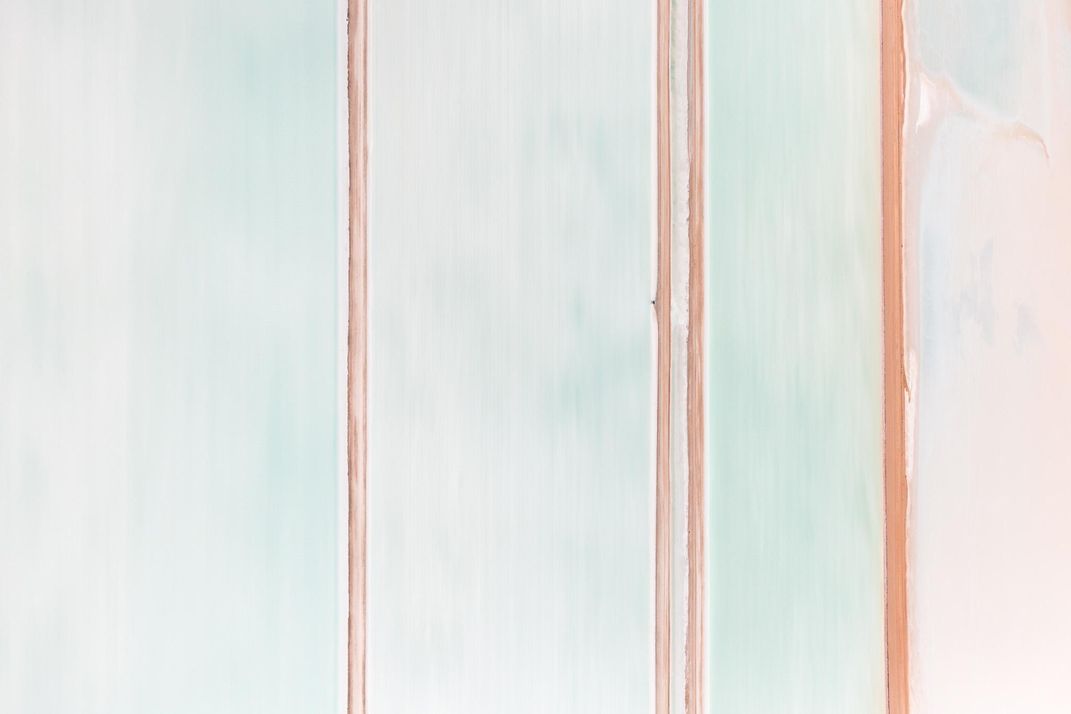
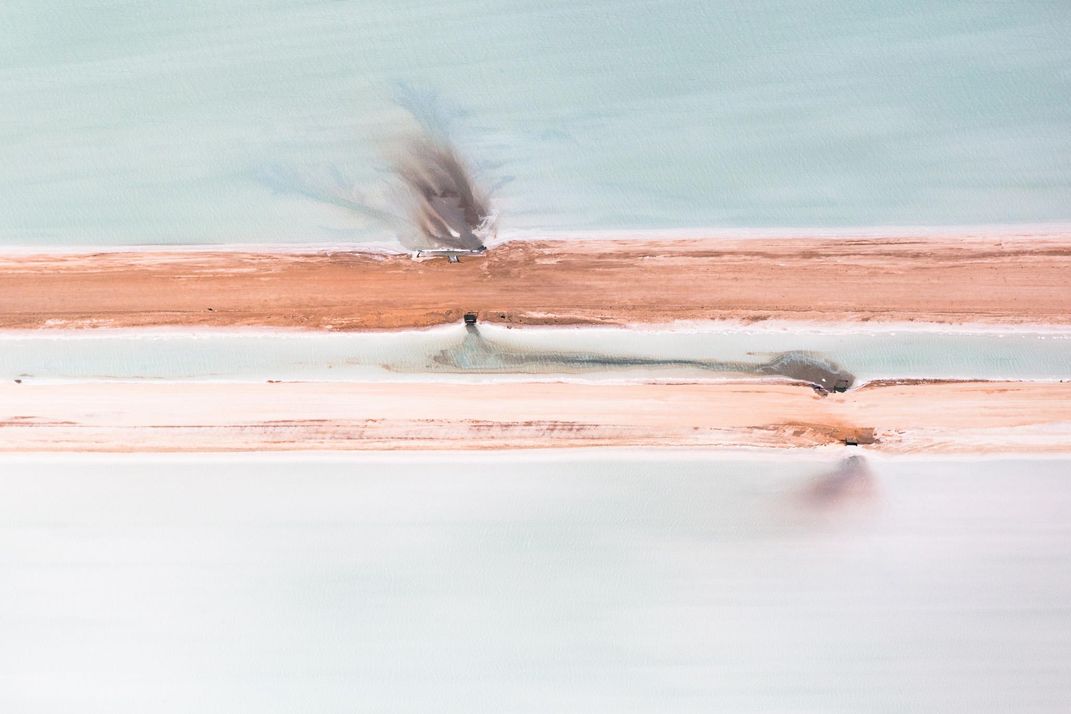
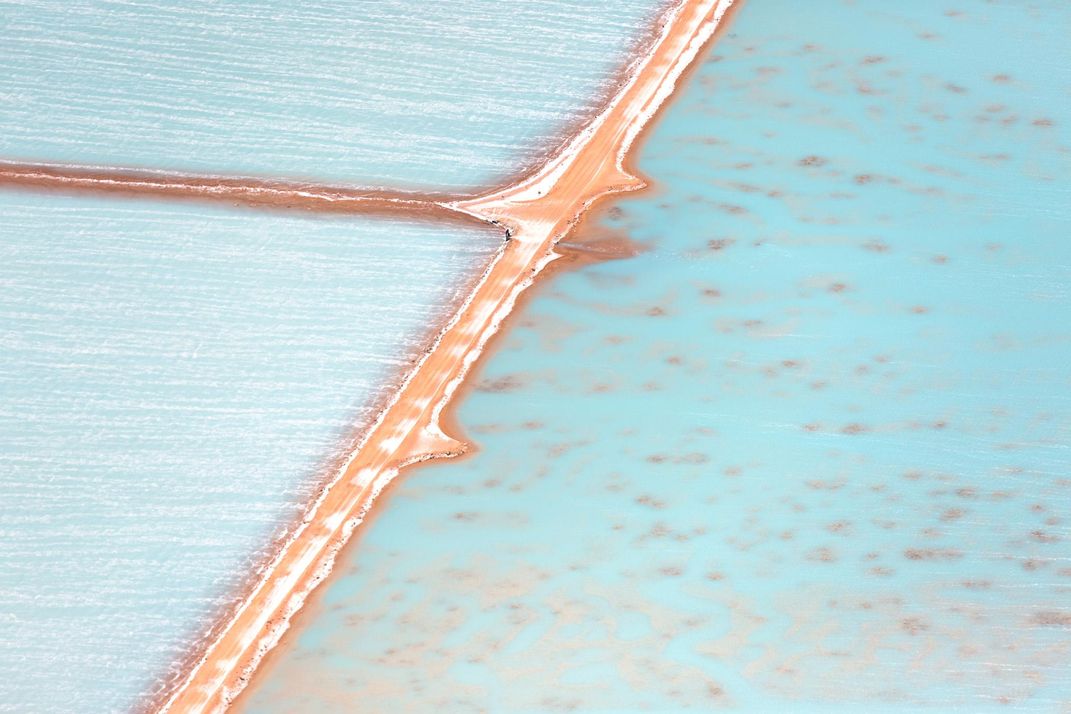
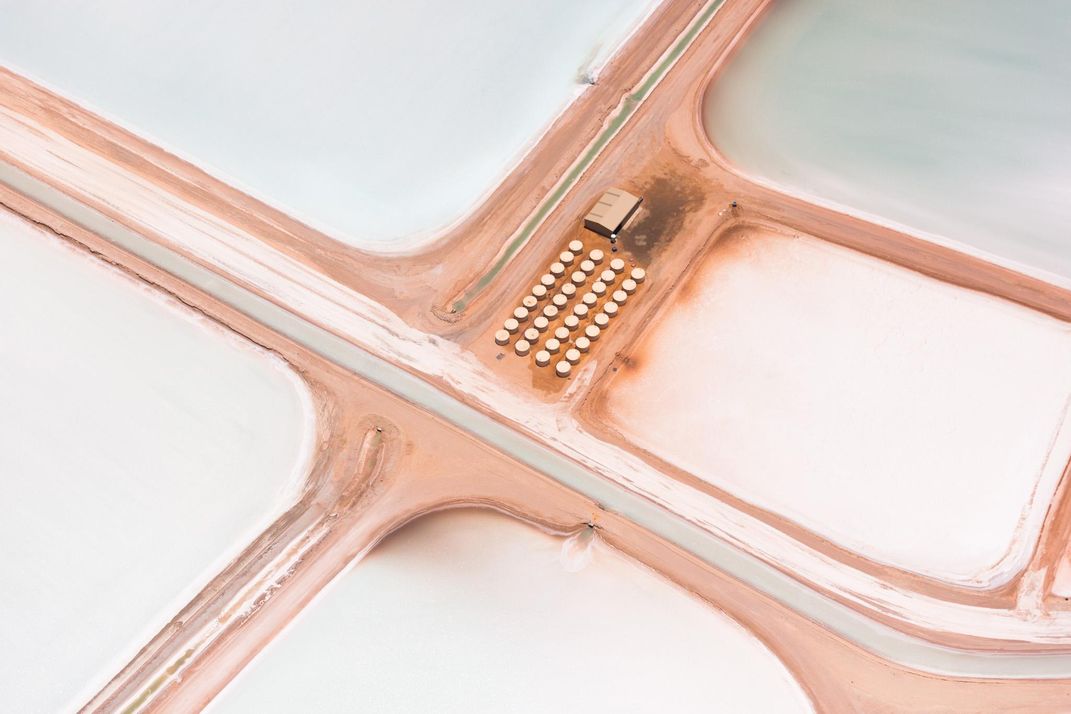
/https://tf-cmsv2-smithsonianmag-media.s3.amazonaws.com/accounts/headshot/amy.png)